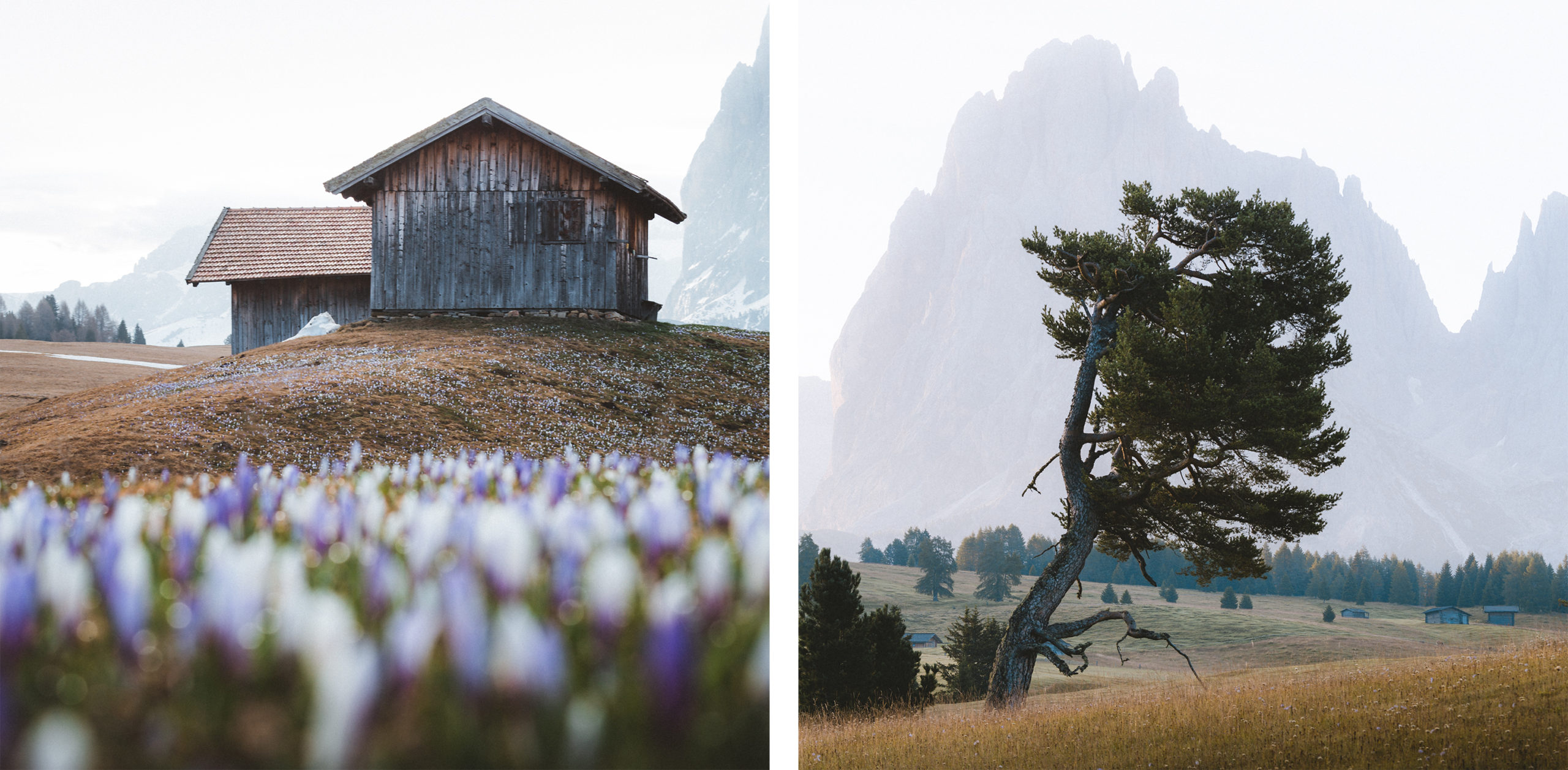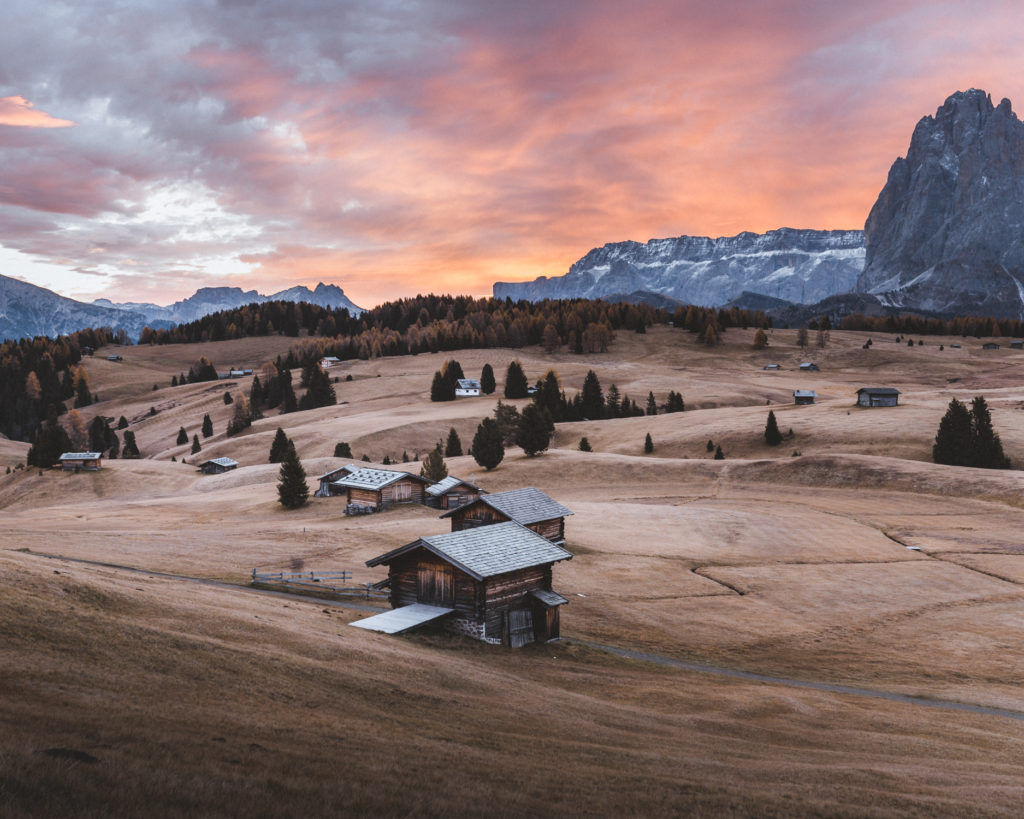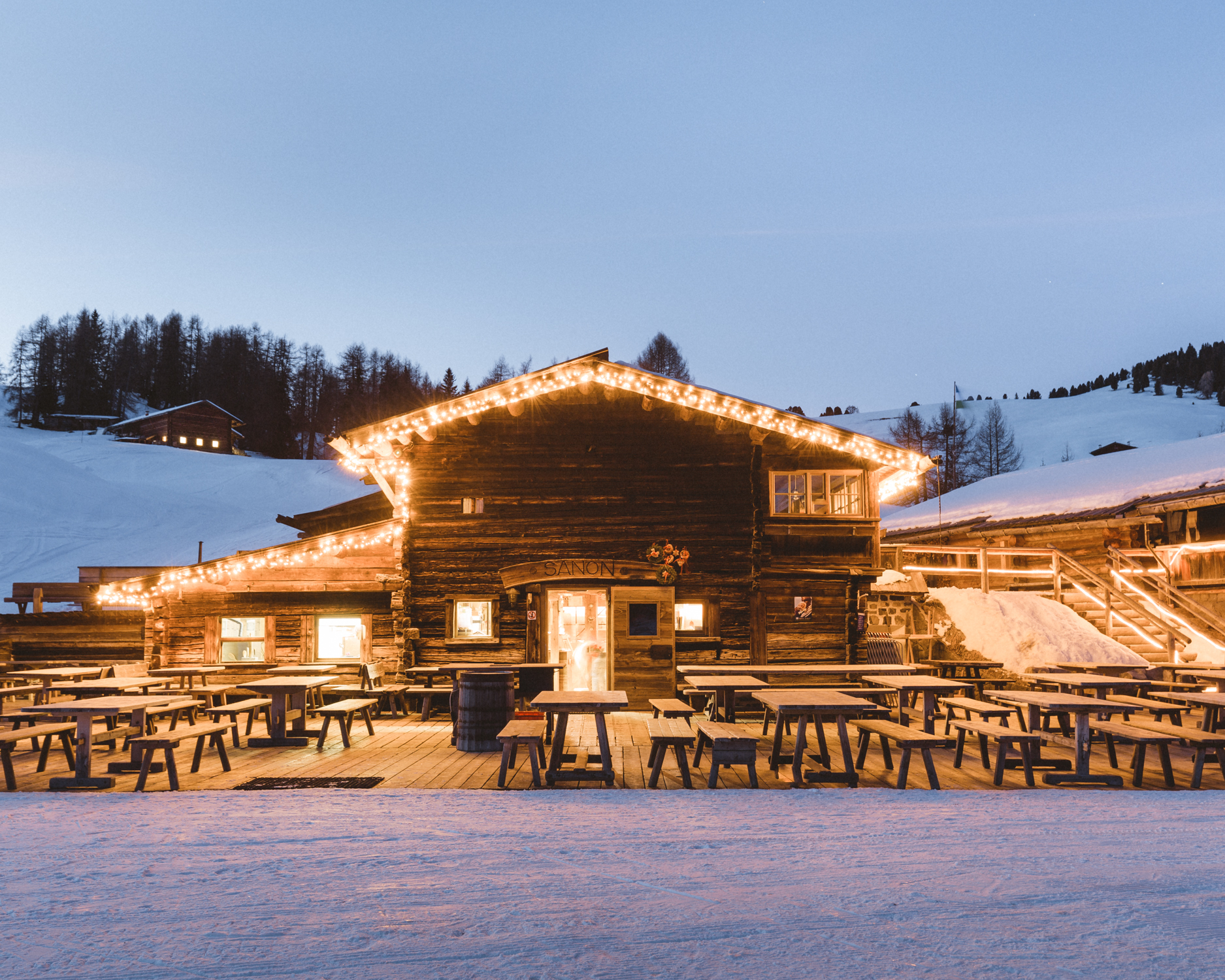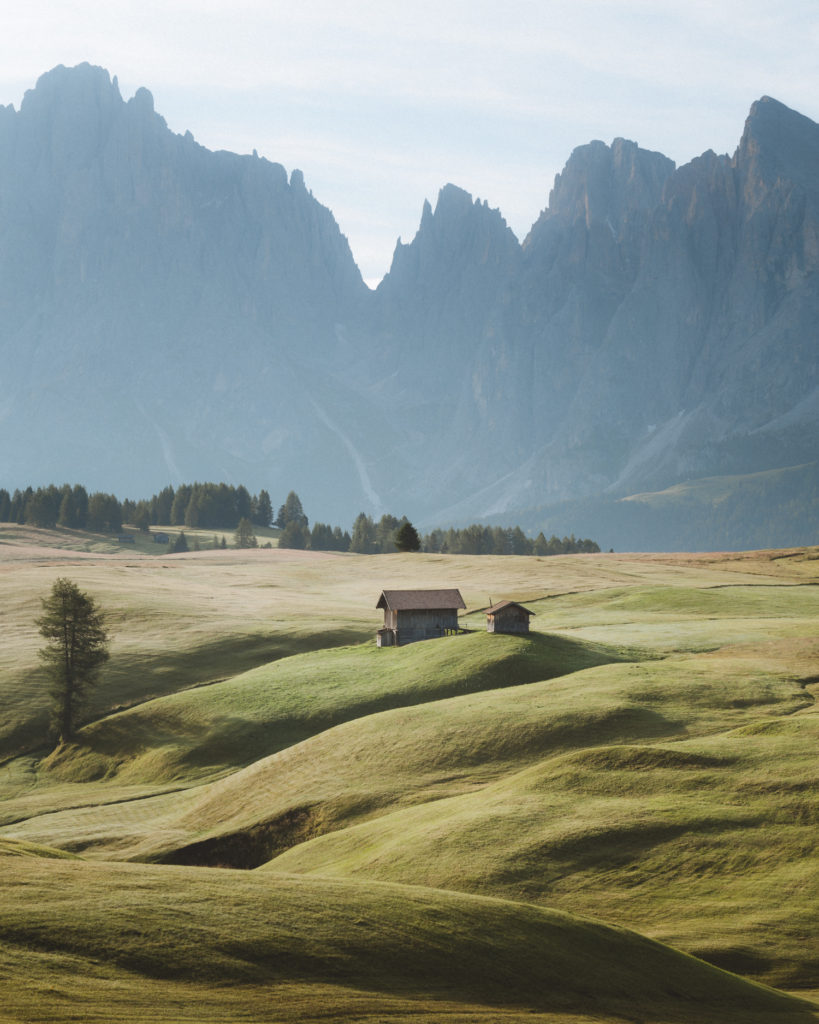Seiser Alm
A practical guide
Seiser Alm, with its 52 km2 (5.5 sq. foot), is the largest high-altitude Alpine meadow in Europe. Located in the western part of the Dolomites, this plateau is literally studded with traditional wooden houses and surrounded by the scenographic peaks of the Sassolungo and the Sciliar. Some of the most iconic sites of the Dolomites are concentrated on this beautiful scenery, offering infinite possibilities to landscape photographers.

Inspiration and viewpoints
If someone were to design a playground for landscape photographers, it would probably look very similar to Seiser Alm.
An expanse of meadows dotted with traditional wooden houses and lonely trees, surrounded by dolomitic peaks, allows an almost unlimited number of compositions. The only limit is your ability to frame the scene: do not repeat just the same shots seen on Instagram! Take your time to move between the cabins to find your unique point of view!
From a photographic standpoint, the most interesting part of the plateau is the one facing the Sassolungo group, where the largest number of houses is concentrated and to which we like to refer to as the ‘cabin paradise’.

Coming from the south, walk along the road leading to the Adler Lodge Alpe and Sonne hotels. Once you have passed the crossroads to Sanon hut, an incredible place where to experience the traditional tyrolean atmosphere, you will find most of the cabins on your right with the Sassolungo mountain range in the background.
You can find some of the best compositions going down the lawns to the area where the houses and the famous crooked tree are located (a stone pine that deserves to be included in your photographs). It is not necessary to frame the Sassolungo to obtain successful photographs. Looking north you will see the Odle ridge in the distance (can you recognize the summit of Seceda?).
Taking advantage of the small valley that bisects the lawns in front of you, you can get excellent shots in that direction! Try using different focal lengths, from the wide angle to frame large portions of this wonderful landscape to the telephoto lens to create more minimal compositions.
For instance, you can capture the group of houses standing out against the backdrop of the rock.

When to go
Season: This is one of the few places in the Dolomites that deserves to be visited 365 days a year. It does not matter if you visit the area when the meadows are full of flowers or covered with snow, when the sun is setting the mountains peaks or the fog is enveloping the wooden huts. This place will always amaze you!
In my case, having visited the area extensively, I often find a mix of weather and light that allows me to see things differently.
However, I would like to recommend visiting this place at the beginning of summer (from May to July), when the meadows bloom, or in autumn (from September to November), when the larches turn yellow and it is easier to find a low layer of mist at dawn.
During winter this place changes its face and the snow covering the meadows allows you to create minimal compositions, framing small houses and trees on a completely white background using a telephoto lens is a possibility.
Therefore, it is absolutely worth visiting Seiser Alm also during the cold season (from December to March). At the beginning of Spring (March-April), when the snow melts and the first flowers peep out on the yellow lawn, some small ponds also appear, giving you the chance to capture amazing reflections.

Time: At sunrise and sunset you will still land on your feet!
At dawn the sun will rise from the left of the Sassolungo, igniting the clouds gathered around the mountain or flooding the meadows with a warm and soft light. Sunrise, especially in autumn, is also the moment when it is easier for a thick layer of mist to rise up from the meadows, surrounding cabins and trees and creating an extremely ethereal atmosphere.
At sunset, the sun will set in front of the mountain range, tinging it with the characteristic pink color of the Dolomites and making it a perfect subject for your shots.
During the day, in case of cloudy weather, the possibility of obtaining suggestive images is guaranteed. Thanks to the low light pollution in the surroundings, this area is also an excellent training ground for astrophotography when the sky is clear!

How to reach Seiser Alm
By car: Referring to the ‘cabin paradise’ spot, things start getting complicated, not because an exhausting hike is necessary to conquer it. On the contrary, the location can be reached in about 45 minutes of quiet walk from the car park of Compatsch, walking eastwards until you find the signs for Sanon Hut.
The problem is actually to reach the parking lot. Apart from the low season months, April and November, the road leading to the plateau is closed to private traffic between 9am and 5pm. This means that you will have to park the car outside those times. In the middle of winter it is possible to reach the parking lot by car very early in the morning, enjoy the sunrise, wait for the sunset (by eating delicious specialities from the tyrolean and ladino areas or a home made dessert at Sanon hut) and get off comfortably.
In late spring and summer you can drive to the parking lot after 5pm and reach the cabin paradise comfortably in time for the sunset. If you want to shoot at dawn, you can decide to leave in the middle of the night or bivouac directly on location respecting the rules regarding camping. An alternative is to sleep in one of the numerous hotels on the plateau, thus having all the time to explore the area in depth.

By cablecar: and bus Most of the tourists reach the plateau with the cablecar that departs from Ortisei, Val Gardena, which leads very close to the cabins area; alternatively, with the cablecar that departs from the village of Siusi and reaches Compatsch. Buses also depart from Siusi to reach the parking lot. Obviously, by using public transport, it will be impossible to reach the photographic location at sunrise or sunset, apart in the middle of winter (December and January), when using the cablecar from Ortisei you can take the last ride after the sun disappears behind the mountains.

